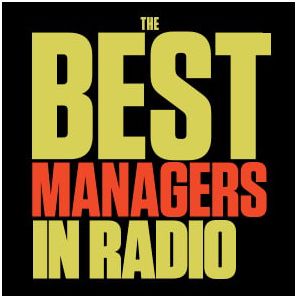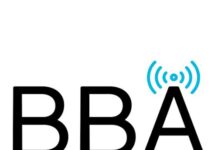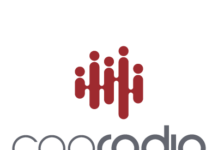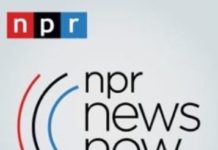
The radio industry has a huge stable of smart, talented and experienced managers. In fact, 30 of them are interviewed in the October 14 print issue of Radio Ink Magazine (which you can subscribe to HERE). Those 30 managers gave us so much useful information about succeeding and leading in a fragmented media environment, we couldn’t fit it all in the magazine.
So, today, we bring you some of that overflow. Seven of radio’s top managers answer the following question: What Can Radio Do Better? Here’s what they had to say.
Ray Quinn is Area President for iHeartMedia Alabama and Market President for iHeart’s Birmingham cluster. “Self-promotion. Radio has a perception problem that needs to be addressed. Radio reaches 93% of the population each week. More people are listening to broadcast radio than are using Google or Facebook or Twitter, yet there is this impression that radio is a dead medium. I have been in this business long enough to have heard this BS many times before. Cassettes and 8-tracks and CDs were all going to bring doom to radio. Then it was satellite radio and Pandora. Do you know that 86% of the time people spend with audio is still radio? We need to do a better job of educating the marketplace as to the amazing continuing power of radio.”
Ami Graham is Market Manager for NRG Media’s Lincoln, NE cluster. “Every radio station gives special access to a unique group of people and we need to do a better job of being a matchmaker between our listeners and our advertisers. When we truly know and understand our audience, we make better recommendations for our clients wanting to grow their business. And the creative! We have to resist the clichés and deliver a message that is compelling and moves people through the buying funnel. It’s all about the right message to the right people enough times! We also need to do a much better job of recruiting young professionals into our industry. Radio will continue to be vibrant and thriving only if we continue to attract new talent in programming, sales, and engineering.”
Roger Lundeen is the GM for Galesburg Broadcasting Company in Galesburg, IL.”
The industry needs to get better at message development and creating great creative strategies for our advertisers. Lengthy spot breaks don’t have to be a tune-out, but unfortunately most of our industry still falls short at making our ads an interesting part of our programming. Most stations have creative control of the majority of their local direct clients, but spend very little energy on the creative. One way to stay competitive with the pure plays is to have great (and mostly local) content, and that includes the promos and commercials. Attention spans continue to get shorter and we need to be creating messages that listeners will not only tolerate, but enjoy. We need more research that shows which messages are effective and how listeners are responding, both long term and short term. The sales team can make the sale, but the creative team helps to get results and get the renewals. We need more “theatre of the mind” and less “PA announcement” ads on our stations. Great ads will inform and benefit the listeners. Bad ads will send them elsewhere. Our listeners do want to save money by switching to Geico. Let’s not scare them away so that they never get a chance to hear about it.”
Keith Lawless is the Market Manager for CMG in Tampa. “Working together. It has improved from years ago, but still lacks a united front. As audio options increase and the battle for the dashboard intensifies, radio should have a consistent message to listeners, auto manufacturers, advertisers, etc.”
Stephanie Prince is Good Karma’s Market Manager in West Palm Beach. “I think we need to continue to embrace how people consume radio and really be looking at our industry as the audio market vs. the radio industry. Between podcasting, streaming, and terrestrial radio, people are consuming the medium constantly and it’s everywhere. We also need to continue to take advantage of the social medium whether it be by pushing out audio or utilizing our personalities’ following to engage with our fans to keep everything top of mind.”
Paul Kelly is President/General Manager for Longport Media in Atlantic City – Cape May. “Two things jump out to me. First, radio needs to be better at telling our story. The dollars we command are not commensurate with the audience we deliver. It’s been that way for many years and it’s beyond time that radio takes control of our own narrative. There is a common misperception that radio is dying and our industry needs to do more to combat that. Secondly, we need to be more proactive in doing what radio does best – deliver local customers to the doors of our advertisers. Radio has been far too reactive in accepting new technology, new ways of thinking, and ultimately new ways of reaching people. We’re in the audience delivery business and whether we reach that audience over the air, online, through podcasts, on smart phones, at live events or whatever comes next, we need to be as proactive as possible in making sure that we’re never out of touch with the ways people consume media.”
Paul Rogers is iHeartMedia’s Area President in Panama City-Tallahassee. “Identifying, recruiting, and hiring the next generation of engineers. It’s alarming when you look at the average age of the chief engineers in our industry, how much incredible head knowledge and decades of personal experience they have, and then look at the thin “bench” we have of talent coming behind them. I think as an industry we need to invest in a program to attract new young engineering talent, while there is still time for them to shadow the more experienced folks at the end of their career so the knowledge can be passed on to the next generation.”






Guys, I gotta boast. I found a hottie online who undressed for me.
Just check my link.
True ‘dat, Roy.
But cutting the absurd phusterclucking of spots is just a beginning – as tough as it would be to instigate. (It’s possible that there is a biblical justification for that status quo. And, as you know, you don’t mess with scripture.) 🙂
How ’bout the fact that the spots themselves are so shabby, so banal and annoying – and at the bottom of the scale of professional commercial advertising?
I am surprised that anybody thinks this is a subject worthy of destruction. Sorry – “discussion”.
CUT THE COMMERCIAL LOADS. Period. End of story.
No one… no one…is going to listen through 12 or more commercials in a break.
The “93% of the population” listens to radio is a flat out lie and misrepresentation, as it relates to advertisers actually getting their paid-for cmmercials heard by listeners, in cluster breaks. Try maybe 1%, if that. And radio has the gall to talk about “digital fraud.” !!!
Nielsen PPM’s conclusively show, that by the 2nd or 3rd commercial in a cluster break… 90% of the audience has TUNED OUT of that station!!
Yet, the corporate owners could care less. Thry figure that more suckers will take the place, of those advertisers who stop advertising, because of lack of results caused by getting buried in cluster breaks. The churn rate for local advertisers is absurdly high in many markets.
And we wonder why radio’s revenue growth is anemic. It’s because many (most) FM stations are engaged in the money-grab called cluster breaks, and could care less about the consequences to advertisers caused by that. Assinine, short-term thinking.
“Nielsen PPM’s conclusively show, that by the 2nd or 3rd commercial in a cluster break… 90% of the audience has TUNED OUT of that station!!”
Really? Show me where they say that. You realize the advertisers see the details on ratings too, and none ever mention that. This sounds more like your personal opinion that any documented facts.
It’s funny Bob, how you and others are quick to attack anyone like me, who offers constructive criticism.
First of all, ad agencies subscribing to Nielsen only see the monthly numbers. They do NOT see the full PPM detailed manifest of a station, that a PD can pull up, at that subscribing station.
Those detailed manifests clearly demonstrate the station’s audience tuning out en masse, as a commercial cluster break gets longer and longer.
Stop obfuscating the facts, and attacking someone like me, when you don’t want to deal with factual realities Bob.
No attack, just show me. Advertisers have the option of placement in the cluster. I know because I offer it. They don’t take that option. Why?
So me where it shows that 90% of the audience tunes out. I’d really like to see.
iHeart and Entercom both charge advertisers a higher spot rate, to be first position in the cluster break. That right there, says that both companies are admitting that there is less value to your spot just being randomly placed in the spot cluster.
It is laughable, that you are defending and in effect supporting absurdly long commercial breaks! No one who is serious, would be doing that.
Thank you “TheBigA” for providing some good troll entertainment!!
I’m not defending anything. You made a statement you can’t back up. I’m still waiting to see where Nielsen says 90% of the audience tunes out. You can’t show me because it doesn’t exist. You lie.
Roy, it is quite a legitimate request to ask for verification of data. If you present data that are so contrary to what is believed, then it is appropriate to be asked to supply your source without thinking that one is under personal attack. We are exchanging data here to get at the truth/reality. We have to know the facts before we can make intelligent new choices.
With advertiser sales attribution to the very penny, there exists practical, precedented proof that our beloved radio industry can grow by billions; despite our industry’s seeming determination – despite years of inflation-adjusted, flat-lining revenue – to continue its course, without collective, corrective action.
This is an opportunity for the radio revenue model to hit the reset button – and ratchet radio’s revenue trajectory upward.
How? By giving advertisers what they tell us they want (what Gordon Borrell’s studies repeatedly prove) – that our industry is collectively refusing to deliver.
What do advertisers want? In markets small and large, for advertisers local and national, give them 52 weeks of documented sales results – directly attributed to their media buy on each of our stations, driven by
– over-arching “marketing” strategies focused on the client’s needs and opportunities – NOT “station-focused” presentations
– delineating the marketing systems, strategies, tactics and tools to further monetize advertiser needs and opportunities
– going far beyond our industry’s typical presentations – too often focused on one or more of rankers, reach reports, three spec spots and a schedule, another “me too” digital offering (not much unlike hundreds of other digital providers located within each station’s signal), plus a promotion thrown in for “added value”.
Right now, all stations have the ability to further capitalize on radio’s preemptive advantage in catalyzing pre-need, pre-search, pre-purchase consumer consciousness. Capture and track “Now” and “Future” buyer information for advertisers along the way; and deliver clients the dollars that come from your services in marketing to their consumers through their buyer journey: on-air, online, off-air.
There are those inside and outside our industry who have profitably executed attribution with documented sales results, that justify advertisers spending more with them, rather than the competition. These approaches generate more revenue and profit per hour of preparation, prospecting, presenting, closing and servicing than what radio does today.
Why? Irrefutable evidence: the advertisers can count the dollars and cents generated from the marketing strategies driving the campaigns with each media company.
If one person can generate millions doing so, our industry can generate billions.
What could happen, if those that have walked the talk, would pay it forward and freely share how others can do so for themselves? I’m happy to freely share.
Given what has been obvious for too long, the title is almost rhetorical.
Plus, given the extreme lack of educated and skilled Talent available to the industry AND the reticence of management to address the issue, the likelihood of improving programming and the generation of more effective commercial copy is grim indeed.
So long as radio’s goals do not include a substantial increase in advertisers’ ROI, the perception of radio as a dead, dying or otherwise extremely afflicted medium will continue.
The 93%-thingie has limited value to those whose concerns have little to do with any of that.
It’s like telling famished diners that today’s gruel comes with a small chunk of cabbage.
No gratitude – just resentment.